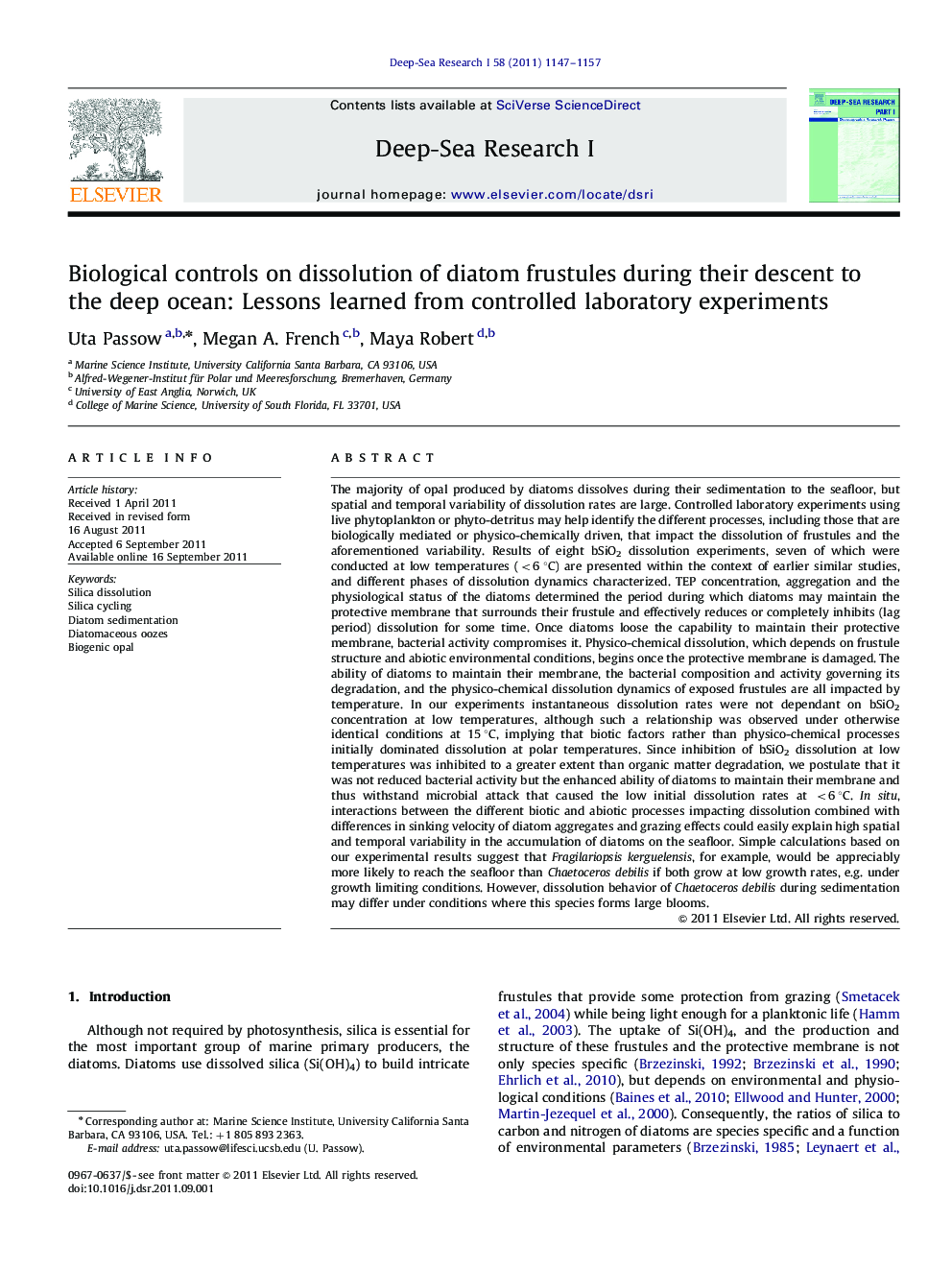| Article ID | Journal | Published Year | Pages | File Type |
|---|---|---|---|---|
| 4534850 | Deep Sea Research Part I: Oceanographic Research Papers | 2011 | 11 Pages |
The majority of opal produced by diatoms dissolves during their sedimentation to the seafloor, but spatial and temporal variability of dissolution rates are large. Controlled laboratory experiments using live phytoplankton or phyto-detritus may help identify the different processes, including those that are biologically mediated or physico-chemically driven, that impact the dissolution of frustules and the aforementioned variability. Results of eight bSiO2 dissolution experiments, seven of which were conducted at low temperatures (<6 °C) are presented within the context of earlier similar studies, and different phases of dissolution dynamics characterized. TEP concentration, aggregation and the physiological status of the diatoms determined the period during which diatoms may maintain the protective membrane that surrounds their frustule and effectively reduces or completely inhibits (lag period) dissolution for some time. Once diatoms loose the capability to maintain their protective membrane, bacterial activity compromises it. Physico-chemical dissolution, which depends on frustule structure and abiotic environmental conditions, begins once the protective membrane is damaged. The ability of diatoms to maintain their membrane, the bacterial composition and activity governing its degradation, and the physico-chemical dissolution dynamics of exposed frustules are all impacted by temperature. In our experiments instantaneous dissolution rates were not dependant on bSiO2 concentration at low temperatures, although such a relationship was observed under otherwise identical conditions at 15 °C, implying that biotic factors rather than physico-chemical processes initially dominated dissolution at polar temperatures. Since inhibition of bSiO2 dissolution at low temperatures was inhibited to a greater extent than organic matter degradation, we postulate that it was not reduced bacterial activity but the enhanced ability of diatoms to maintain their membrane and thus withstand microbial attack that caused the low initial dissolution rates at <6 °C. In situ, interactions between the different biotic and abiotic processes impacting dissolution combined with differences in sinking velocity of diatom aggregates and grazing effects could easily explain high spatial and temporal variability in the accumulation of diatoms on the seafloor. Simple calculations based on our experimental results suggest that Fragilariopsis kerguelensis, for example, would be appreciably more likely to reach the seafloor than Chaetoceros debilis if both grow at low growth rates, e.g. under growth limiting conditions. However, dissolution behavior of Chaetoceros debilis during sedimentation may differ under conditions where this species forms large blooms.
► Initially, biology controls dissolution of diatom frustules during sedimentation. ► Ability of diatoms to maintain their protective membrane postpones onset of dissolution. ► Aggregation/TEP and life history impact this ability. ► Physico-chemical dissolution begins after bacterial activity compromised the protective layer. ► Temperature affects all three processes: diatom viability, bacterial activity, and physico-chemical dissolution.
